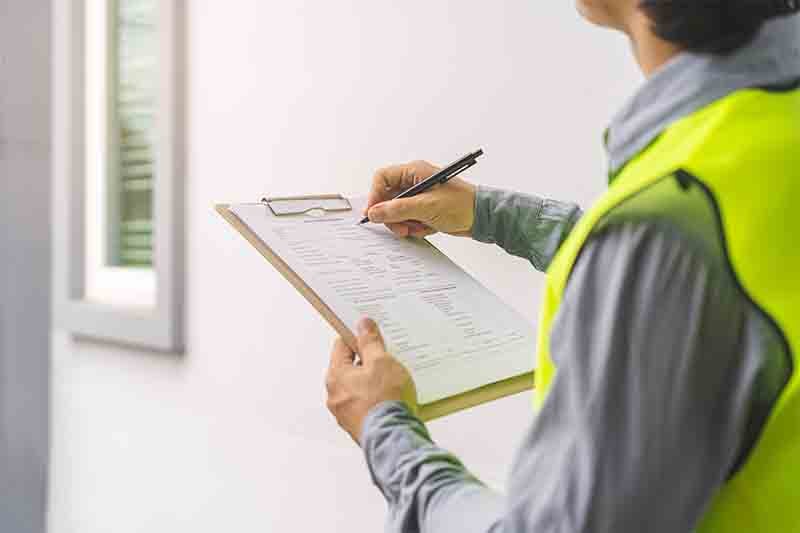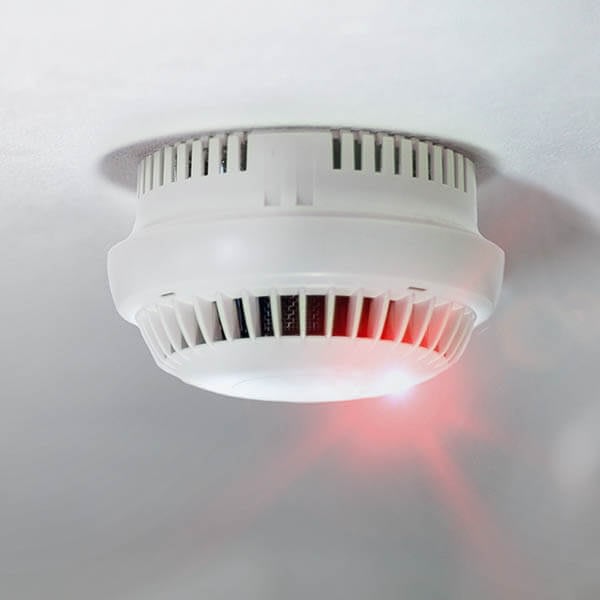If your business has been closed during the lockdown period, your fire safety systems may not have been subject to recent testing and maintenance. Now’s the time to make sure everything is compliant – and ready to do its job properly if a fire breaks out.
Before returning to business as usual – or your new ‘normal’ – all your fire alarms, sprinklers, fire extinguishers and other key fire safety systems should be tested and checked by your Responsible Person – we recommend that any resulting service and maintenance work is then completed by a BAFE-approved engineer.
How to ensure fire safety in the workplace
Fully functioning systems are vital to the safety of your business and all those working in or visiting the premises. If you identify any faults with the systems, any required maintenance or repairs should be carried out before you re-open in order to stay compliant with fire safety regulations.
Here are the key things you need to check to minimise the risk of workplace fires – and ensure effective detection, suppression and evacuation if the worst happens.
1. Check your Fire Risk Assessment
Have you carried out a full fire risk assessment in the last 12 months? Even if you have, does it reflect the way your business will now operate with likely changes to working practices, staff numbers and modifications you may have had to make to your premises? It’s also important for all businesses to consider the impact a fire would have in the COVID-19 world, especially where new Health & Safety measures are implemented to follow Government advice on social distancing.
You may need to fully re-assess the following:
- Staffing levels and availability to carry out an evacuation where required
- Accessibility for anyone who may need additional assistance in an emergency
Important: Personal Emergency Evacuation Plans that were in place prior to the lockdown need to be reviewed with disabled or vulnerable individuals, to make sure procedures are still suitable.
- Lone worker emergency action plans
- Changes in working practices
- Current stock levels and item types (flammability)
- Testing & maintenance – do you have the right service contract in place?
- Employee training – especially your Responsible Person, fire wardens or fire marshals
- Emergency Evacuation Plan (one-way and social distancing changes)
Important: Where businesses have implemented one-way systems to enable social distancing, the impact this may have on the Emergency Evacuation Plan needs to be assessed, as does the use of lifts to evacuate staff, visitors and residents who cannot make use of the stairways.
- Fire service and emergency access
- Fire equipment condition (having potentially been unused and untested for months)
This list is not exhaustive and lots of other measures will need to also be considered. Please contact our experts if you want to review your fire prevention plan or need a full Fire Risk Assessment.
2. Check Your Fire Alarm System
Are your alarms up to date in terms of testing, inspection and maintenance? Maintaining regular inspections, at specific periods and intervals, is a firm requirement under British Standards which informs your compliance under the Regulatory Reform (Fire Safety) Order 2005.
3. Check your Emergency Lighting
Is your emergency lighting suitable, sufficient and maintained? All emergency lighting systems must be tested monthly in accordance with BS EN 50172 / BS 5266-8.
4. Check your fire extinguisher requirements
Are there enough fire extinguishers available in the required locations? Fire extinguisher maintenance is essential to ensure your extinguishers are ready for use in an emergency situation in accordance with the BS 5306-3.
5. Check your sprinkler system (if installed)
If you have a fire sprinkler system, have the sprinkler heads been regularly maintained? Fire sprinkler systems should be inspected at least once a year.
6. Check your dry and wet risers (if installed)
BS 9990 requires dry risers to be tested under pressure annually with a visual inspection every six months. Replace any worn or missing parts including washers, straps, padlocks, gaskets etc.
7. Check your fire doors
Are your fire doors in good working order & regularly maintained? When staff return to your premises, you should also remind them that – even though it may seem like good hygiene practice in the current circumstances – fire doors should remain closed and must not be held or wedged open as this will render them ineffective should a fire break out.
Blog: How to prevent fire hazards in the workplace >>
8. Check all high-risk areas
Before your business re-opens, you should check all high-risk areas (e.g. kitchens, plant rooms, electrical intakes, server rooms, boiler rooms) to ensure no combustible materials have built up during the lockdown. Particular care should be taken when re-energising any plant and equipment, to minimise sudden ignition risks.
9. Check portable electrical equipment
Where portable electrical equipment and appliances have been switched off during the lockdown restrictions, you should consider if portable appliance testing (PAT) is required to ensure the safety of this equipment before re-use. This check should be extended to staff returning to work with privately owned non-tested portable appliances and charging equipment.
10. Check stored flammable materials
It’s likely that you’ll now be using and storing high volumes of alcohol-based hand sanitiser, and so you should consider the flammability of your stock and the associated risks. Check all warning labels and keep away from ignition sources i.e. heat, sparks, open flames, hot surface and smoking materials.
11. Check any fire alarm remote monitoring
If your fire alarm is linked to an Alarm Receiving Centre/Remote Monitoring Service, this connection should be tested to ensure a working response in case of emergency. Please contact your service provider to ensure that their service to you is not affected by the Coronavirus pandemic.
Important: When returning to work and testing fire alarm equipment, care should be taken to manage or prevent unwanted fire signals or false alarms to the emergency services. If sent to the Brigade, these false alarms divert resources away from responding to emergencies or supporting the fight against Coronavirus. Please contact your service provider for help and guidance on carrying out any testing required.
12. Check your emergency escape routes
All re-opening businesses should carry out an ‘evacuation inspection’ (e.g. stairways and corridors) as soon as possible to ensure they are clear and accessible for all people in the building. This inspection should include all external parts of the escape route to ensure fire exit doors can be opened in an emergency (these might have been locked during the lockdown) and no obstructions exist once outside of the building.
Discover AOV smoke ventilation >>
Where escape routes and processes are altered to implement social distancing and other safety measures within your building, this needs to be communicated to all staff so they can familiarise themselves with any changes. Any fire action notices will need amending, where necessary, and it’s critical that you check fire exit doors too – they are vital to the efficiency of your escape routes and to your staff, as they can prevent a fire and/or smoke spreading through your building.
Even if your drill is largely unchanged, it’s important to run a ‘refresher’ and ensure any new staff are fully informed when it comes to emergency procedures.
Important: If you share an escape route with another business, it may not be open as usual. Arrangements may be needed with these businesses to ensure shared escape routes can still be used, or alternative escape routes located.
With a number of specialist fire businesses across the JLA Group, we provide a full range of fire safety services all over the UK – from initial fire risk assessments to equipment & device installation and maintenance cover.

